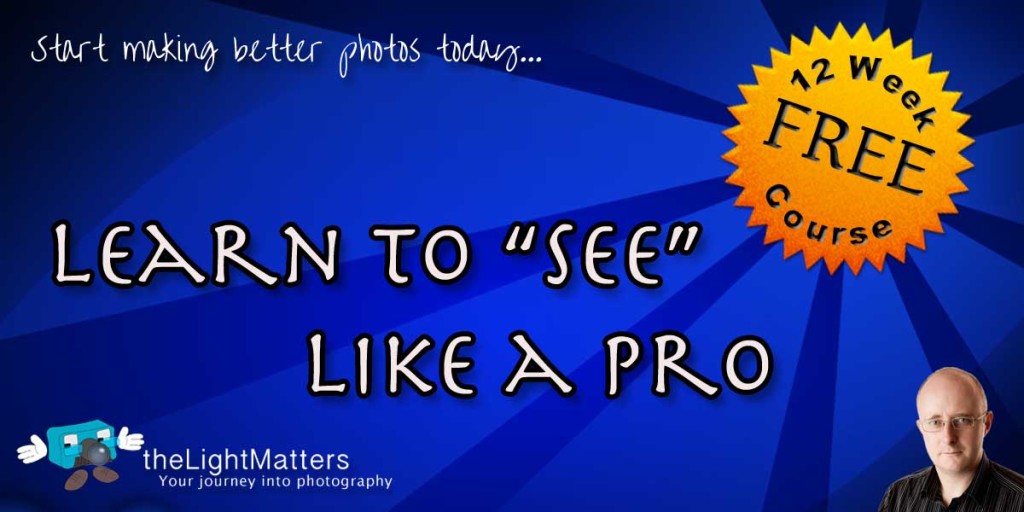Back in the studio tomorrow for an all day shoot. To be honest, I should really be prepping and packing rather than writing this but I thought it might be good to explain what I take and why.
I’m a great believer in packing for the occasion, in this case the studio, but it needs a little thought and planning. You need to take the right stuff and if you’re not careful you’ll end up taking far too much. Even worse, you may end up not taking something essential.
Here’s what I take
The obvious stuff to take…
Camera…
The obvious items are the camera and backup camera. Why two? Because if one breaks I’m no longer a photographer! I’d also much rather use my own kit than borrowing something that’s unfamiliar.
Lenses…
This requires a careful selection, depending on the size of the studio’s shooting area. Anything too long and you’ll be too far away and maybe not have enought room. Anything too short and you’ll distort the subject and spend a lot of time cropping out the studio walls, furniture and light stands.
Batteries…
Always more than one per camera. If the battery dies and you don’t have a replacement, guess what, you’re no longer a photographer.
I usually charge then the night before and leave the charger literally on top of the kit bag. The battery won’t be a lot of use if you leave it at home and guess what, you’re no longer a photographer.
If you’re using your own radio triggers, check the batteries in them too. I use the PocketWizard Mini/Flex system and absolutely love it but the Mini (the transmitter that sit in the hot show of the camera) has a nasty habit of getting switched on in my kit bag. No idea how, but it’s happened to me several times and the lithium cell has been drained. I now carry a brand new spare one with me whenever I go out. For tomorrow though this won’t be an issue as the studio has their own triggers for their lights.
Basic rule of thumb… If it uses a battery check and charge. If its not rechargeable, take a spare. If it is rechargeable, take a spare anyway.
Memory cards…
Format and pack the day before. I also always leave one in the camera. Why? Because if you forget to bring the card case and you have no cards, guess what, you’re no longer a photographer.
Colour Checker…
Absolutely essential. It’s by far the easiest way of making sure the colours are correct. I always start with correct colour now for everything. It gives me a clean reference point, a datum to work from. Even if I’m doing black and white or something creative, I always start with clean, correct colours.
The non-obvious stuff to take…
Deodorant…
The studio can get hot. The shoot takes a lot of energy so I get hot too. Taking a deodorant just shows a little respect to the client and your team.
Chocolate…
You get back as much energy as you put in. An all day shoot requires a lot of energy so a bar of chocolate is an essential piece of kit. That’s my story and I’m sticking to it.
Back up drive…
Another essential, especially for a revenue shoot. The flash card is a single point of failure. To mitigate the risk I download the images to my MacBook after each shot and create a duplicate copy on a backup drive at the same time. I now have three copies of the image and can sleep easier at night. I’ve also made three copies before I’ve left the studio and whilst the team is there. It gives me a chance for a second take if something goes wrong.
Stuff not to take…
Strap…
I hate the manufacturers’ strap and absolutely love my R-Straps but I never use them in the studio. I find having a camera hanging off me when I’m trying to build or change a set just gets in the way. I loke to be able to move. I like the freedom. The straps stay behind.
Flash…
I shoot in a professional fashion studio with lighting that cost more than my first house. Unless I’m doing something special or going on to another shoot, the speedlites stay behind.
Long Lenses…
The longest lens I use in the studio is my 70-200 f/2.8L but then only at the wide end rather than the tele. Unless I have a shot that specifically requires it, anything longer stays at home.
Wide Lenses…
Again, unless there is something that specifically calls for it th ultra-wide lenses stay at home. I do occasionally bring the 16-35 f/2.8 with me. It’s great for setup shots and I really want someone to shoot video of me in action with it but it’s surprising how many people can’t get a sharp shot.
Tripod…
Enough said really. There are occasions where it’s necessary but for the most part the tripod in the studio just gets in the way.
The one time I did use it for when I tried TTV for the first time but it actually turned out easier not to.
Negativity…
This is a biggy. You can’t get the results if you’re not mentally prepared. As the photographer you are in control. It’s your responsibility to deliver. You can’t afford to be in a bad mood not can you let anyone in your team be either. You need professionalism. You need commitment. You need everyone’s paddle in the water as Joe Calloway so aptly put it in his book.
Disclaimer…
This is my personal choice based on my experiences. It varies for each type of shoot I do but isn’t definitive. It’s your choice – your the photographer. If you leave something behind that you need just because you read it here, it’s on your head.
Top Tip…
Every time you get back from a shoot write down a complete list of the stuff you took. The highlight all the stuff you didn’t actually use. Next time you pack for that type of shoot, leave the highlighted stuff behind.
Summary…
Being a professional photographer is more than just taking pretty pictures. You have to prepare and plan. You have to make sure you have everything covered.
Packing for a shoot is more than just putting your gear in a bag. It’s considering what you may need, both from a technical perspective and a non-technical one. The stuff you don’t take is just as important as the stuff you do. Camera equipment is heavy and expensive. Taking things you don’t need puts them at risk of damage or loss. That’s a risk I’m not prepared to take.


